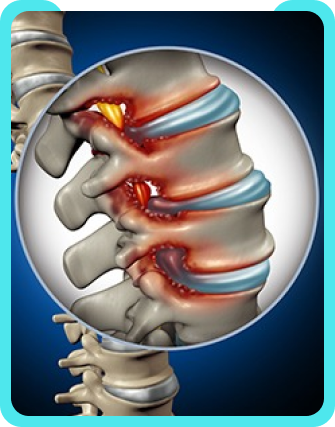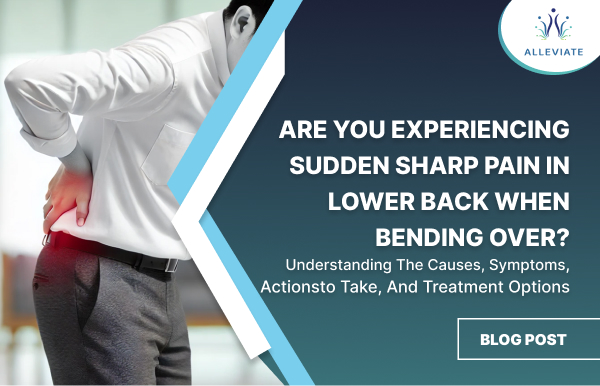
Best Spinal Stenosis Treatment & Doctors in Bangalore
- Home
- Conditions
- Back & Spine Conditions
- Spinal Stenosis
What is Spinal Stenosis?
Spinal Stenosis is a condition characterized by the narrowing of the spinal canal, which can compress the spinal cord and the nerves traveling through the spine. This narrowing can occur in different parts of the spine, but it is most commonly seen in the lower back (lumbar stenosis) and the neck (cervical stenosis).
Treatment for Spinal Stenosis
Anatomy of the Spine
The spine is a complex structure made up of vertebrae, intervertebral discs, ligaments, muscles, and the spinal cord. The spinal canal is a hollow passage within the vertebrae that houses the spinal cord and nerve roots. Any reduction in the space within the spinal canal can lead to compression of these neural structures, resulting in pain and other symptoms.
Prevalence & Etiology
Spinal Stenosis primarily affects older adults due to degenerative changes in the spine, but it can also be caused by congenital conditions, injuries, or other medical conditions. The prevalence increases with age, with significant occurrences in individuals over 50 years old.

Common Causes
- Degenerative Changes: Age-related wear and tear, such as osteoarthritis, can lead to the formation of bone spurs and thickened ligaments, narrowing the spinal canal.
- Herniated Discs: Discs that bulge or rupture can press on the spinal cord or nerves.
- Congenital Stenosis: Some people are born with a naturally narrow spinal canal.
- Spinal Injuries: Traumas or fractures can cause swelling or dislocation of the vertebrae, leading to stenosis.
- Tumors: Abnormal growths can reduce the space in the spinal canal.
- Paget’s Disease: A bone disease that can result in enlarged and misshapen bones, potentially compressing the spinal canal.
Symptoms
The symptoms of Spinal Stenosis vary depending on the location and severity of the stenosis. Common symptoms include:
- Pain: Localized or radiating pain in the back, neck, arms, or legs.
- Numbness or Tingling: Sensations in the affected limbs.
- Weakness: Muscle weakness in the arms or legs.
- Balance Issues: Difficulty walking or maintaining balance.
- Bladder or Bowel Dysfunction: Severe cases may affect bladder or bowel control
Diagnosis
Diagnosis involves a thorough medical history and physical examination. Imaging studies such as X-rays, MRI, or CT scans are crucial in confirming the presence of spinal stenosis and determining its severity.
Treatment
Treatment for Spinal Stenosis ranges from conservative to surgical interventions depending on the severity and impact on the patient’s quality of life.
Conservative Treatments
- Medication: Anti-inflammatory drugs, pain relievers, and muscle relaxants.
- Physical Therapy: Exercises to strengthen the back muscles and improve flexibility.
- Steroid Injections: To reduce inflammation and pain.
- Lifestyle Modifications: Weight management, avoiding activities that aggravate symptoms, and maintaining a healthy posture.
Surgical Treatments
- Decompression Surgery: Removing bone spurs, disc material, or thickened ligaments that are causing compression.
- Spinal Fusion: Stabilizing the spine by fusing two or more vertebrae.
At Alleviate
we specialize in comprehensive care for spinal stenosis, a condition causing the narrowing of spinal canals and nerve root compression. Our approach combines advanced medical interventions with tailored physiotherapy and lifestyle modifications to relieve symptoms and improve quality of life.
Medical Interventions
- Injection Therapies: Options include transforaminal or epidural blocks to reduce inflammation and alleviate pain.
- Prolotherapy: Enhances healing by strengthening spinal ligaments.
Advanced Procedures
Endoscopic Decompression: Minimally invasive procedure for precise nerve relief if conservative treatments are insufficient.
Comprehensive Care
- Physiotherapy: Customized programs focusing on spinal flexibility, strengthening, and pain management.
- Lifestyle Modifications: Guidance on ergonomics, exercise, and activity adjustments to support spinal health and prevent future issues.
Why Choose Alleviate?
- Expertise: Led by experienced specialists committed to personalized care.
- Integrated Approach: Combining advanced treatments with evidence-based physiotherapy and lifestyle strategies.
- Patient-Centered: Focused on improving comfort, mobility, and overall well-being.
FAQ'S
Symptoms typically progress over time, as nerves become more compressed. You might experience:
- leg or arm weakness
- lower back pain while standing or walking
- numbness in your legs or buttocks
- balance problems
The first step in treating Spinal Stenosis is to make an appointment to see a Spine Specialist or a Pain Specialist for Spinal Stenosis diagnosis and to learn your Spinal Stenosis treatment options.
Video Spotlight
Blog
Surgery-Free Solutions
Expert Tips for Pain Management
Testimonials
Words From Our Patients
I am Dr M.N.Arun from bangalore. Came for spinal chord treatment at Alleviate Pain Management and met DR Swagatesh Bastia. The treatment given was very good and now pain has come down.The staff here are very good. Now under going Physiotherapy for pain relief. I recommend for pain relief treatment Alleviate for treatment.
My wife had severe Low back pain since her pregnancy, nothing was helping her out then we came to know about Alleviate hospital. We met Dr Shubha, she consulted and diagnosed her problem and she underwent 2 spinal injections. Her pain is gradually reducing and feeling much better now. Shesbeen taking physiotherapy with Navneetha ma’am since 2 weeks.she fees good now. She is following all the exercises.Thanks to the entire staff of Alleviate. Must visit for those having chronic pain.
Outstanding service! Had a top-notch experience with spinal cord stimulation therapy. Professional staff, effective treatment, and excellent results. Highly recommend







